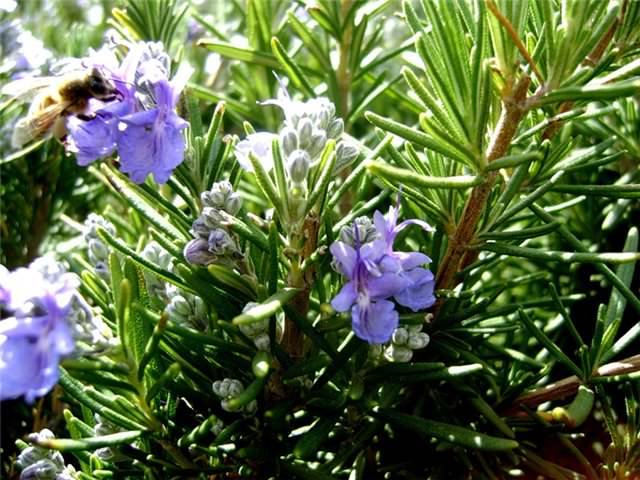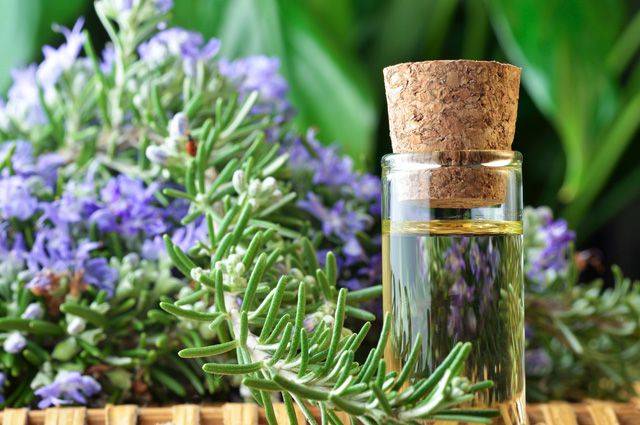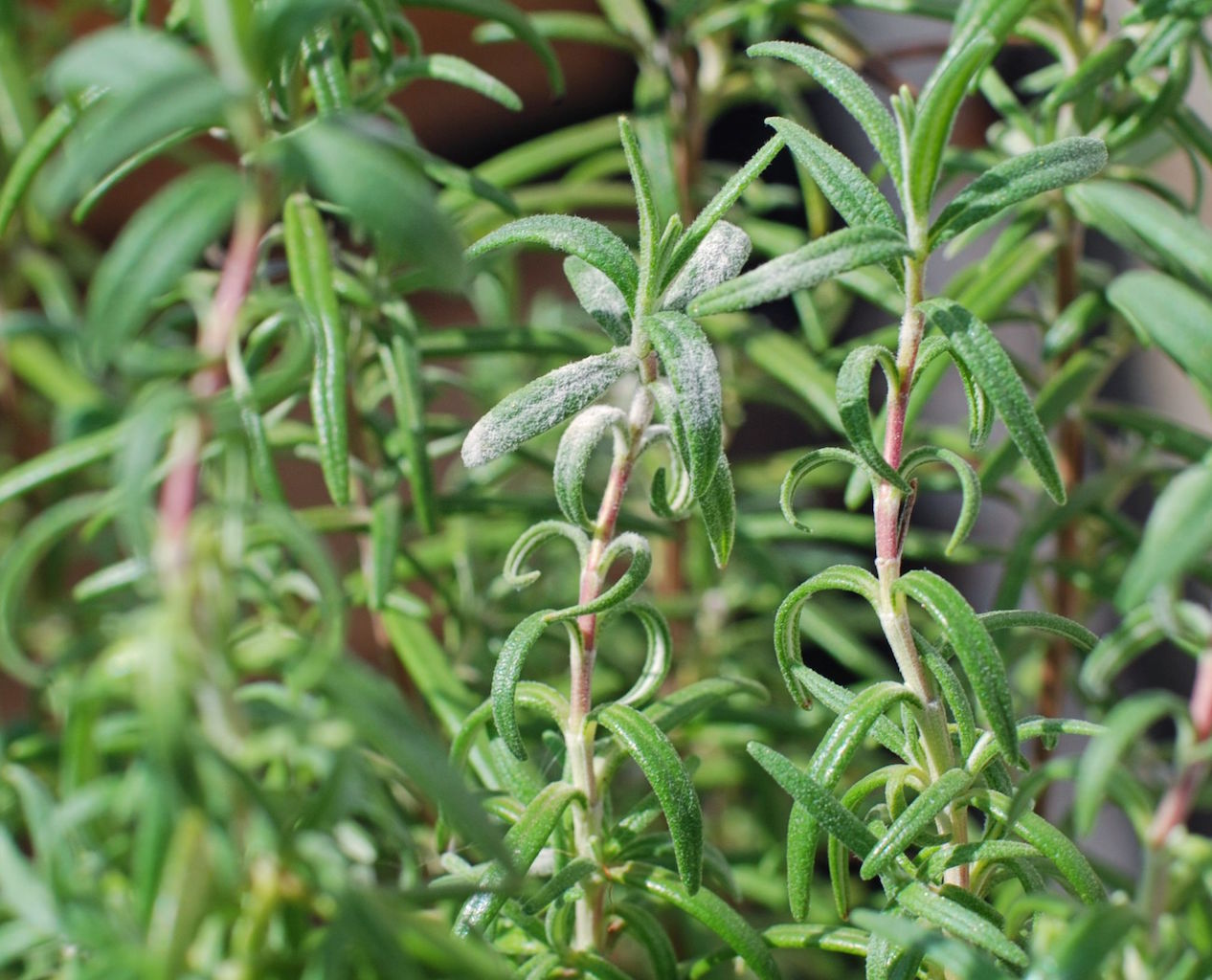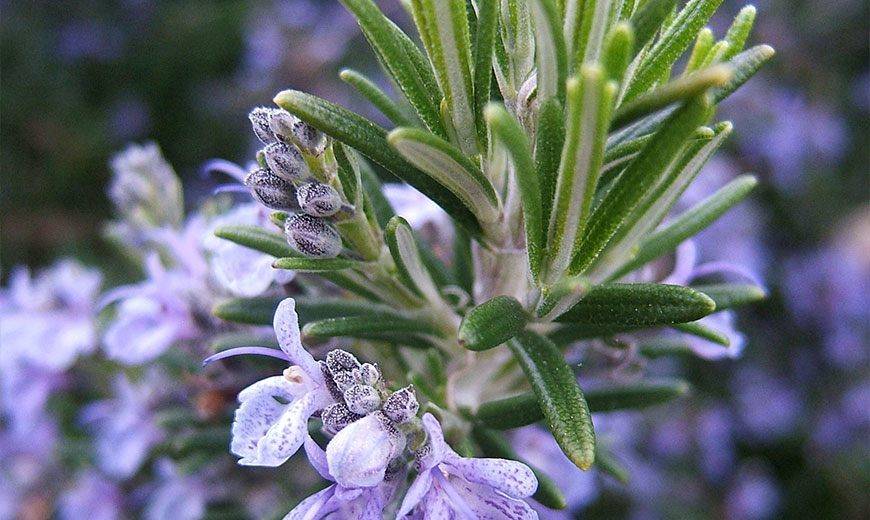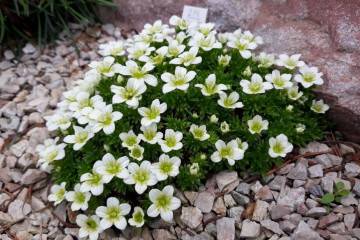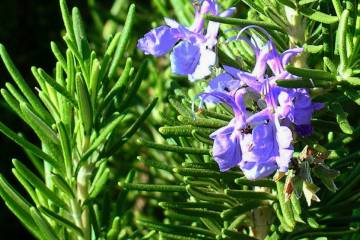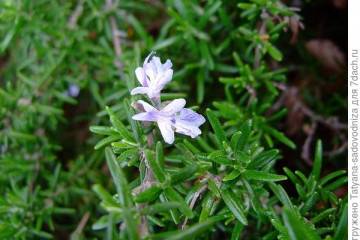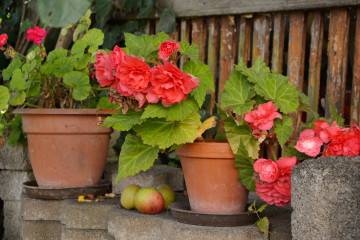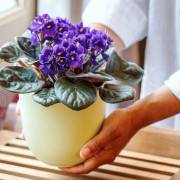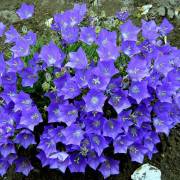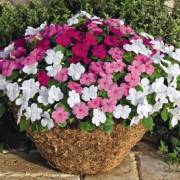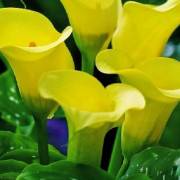Rosemary - home growing and care
Content:
Rosemary is quite popular in northern latitudes, despite the fact that it is native to the coastal areas of the Mediterranean Sea. The plant is known as a spice, but it has other uses as well.
What does it look like, which family it belongs to
The evergreen bush belongs to the Yasnotkovy family. Do not confuse the annual or perennial rosemary, the plant sprouts after a dormant period and belongs to perennial plants. Growth does not exceed 2 meters in height and has stems with feathers on the surface. Long and thin leaf plates are placed on short cuttings. It blooms with small flowers, collected in panicle inflorescences.
Common varieties
Medicinal rosemary has erect erect shoots and leaves. It grows up to 2 meters in length. Thin leaves of rich green color, elongated and needle-shaped.
Rosemary is open. In its natural environment, it grows in southern latitudes. The bush is no more than 2 meters high, has a spherical crown. The leaf plates are thin, like needles. The foliage has the distinctive tendency to change its foliage from green to turquoise blue in the fall. The widespread view is often used in landscape design, to decorate hedges.
Corsican Blue is distinguished by gray-green leaf plates and an incredibly long root system that can reach 4 meters in depth. Small blue buds are collected in wide and dense panicle inflorescences. It is used for both decorative and medicinal purposes.
The Crimean variety in indoor conditions can begin to bloom as early as February. The bush reaches a maximum of 1 meter in height and thinns the pleasant scent of sea and lavender. Leathery leaves have the shape of elongated needles, their surface is gray-green in color.
Healing properties
In its composition, the plant contains many useful and strengthening substances: acids, essential oils, minerals, vitamins, phytoncides. Rosemary has strong healing properties:
- invigorates the body and strengthens the immune system;
- relieves pain;
- speeds up metabolism;
- normalizes blood pressure;
- destroys fungus and other infectious diseases;
- relieves swelling, has a diuretic property;
- heals wounds and relieves inflammation.
Briefly about the history of appearance
Growing rosemary at home was carried out in ancient times on the coastal territories of the Mediterranean Sea. The Romans and Greeks used branches as amulets and treated various ailments with herbal infusions.
Rosemary: growing and care
If you decide to grow a rosemary flower, planting and care in the open field should be thought out in advance. Growing a flower is practically no different from the cultivation of other horticultural crops. The main thing in caring for rosemary is regular loosening of the soil, pruning, fertilizing and proper watering.
Temperature
The plant loves warmth, so you need to monitor the temperature regime. The temperature should not be allowed to drop below 15 degrees during the active period.
Lighting
Choose lighted areas for growing rosemary outdoors. The most important thing about rosemary is its leaves. Therefore, it is important that the leaves receive a lot of sunlight for the production of chlorophyll and the formation of succulent leaf plates.
Watering
The plant is resistant to drought, but it is better to play it safe and regularly water it correctly. Irrigation water should not be cold and in excess, otherwise fungus and mold will appear due to stagnant moisture. Better to water with soft and slightly cool water.
Spraying
It is useful, against yellowing of leaf plates, to spray the foliage with a solution of ferrous sulfate or citric acid. The procedure is carried out in the morning or evening, or during the day in cloudy weather. Otherwise, the plant may get burned and die.
Humidity
How to grow rosemary with luscious and lush foliage? It is necessary to monitor the humidity of the air. To get thick and fleshy leaves, you need to spray the ground part of the plant with water. In the open field, there is no particular need for spraying.
Priming
Planting and maintaining rosemary requires choosing the right soil. The plant loves fertile, moist and loose soil. It is recommended that before planting in the holes, lay a layer of drainage material on their bottom and add humus, compost and river sand.
Top dressing
The state of the flower itself will tell you how to grow rosemary at home correctly. A sluggish appearance and lack of growth indicates a lack of feeding. You need to feed the bush with mineral and organic fertilizers. In the spring, it is necessary to apply nitrogen-containing fertilizers, and at the end of summer, organic and potassium-magnesium fertilizers.
How rosemary grows in winter
In winter, perennial shrubs, in contrast to annuals, must be covered. Moreover, rosemary is a thermophilic culture. To do this, the entire ground part of the bush is cut off and covered with a layer of sawdust. Then spruce branches are laid out on top, they should look like a small tent or tent.
When and how it blooms
The bush begins to bloom in April or May, depending on lighting and temperature conditions. It blooms profusely, the buds thin out a pleasant spicy aroma.
Types of flowers
Flowers, depending on the variety, can be of different colors: white, purple, lilac, pink. The variety does not particularly affect the shape of the flowers.
Flower shapes
Small flowers have the shape of an uneven wavy calyx. In the center of the bud are yellow stamens. Each inflorescence contains at least 40 flowers.
Flowering period
Flowering begins in April - May in northern latitudes and lasts until June - July. At home, rosemary begins to bloom in February.
Changes in care during flowering
There is not much difference in how to care for rosemary during flowering and normal conditions. The only thing you need to pay attention to is the composition of the preparations for feeding. They should not contain nitrogen if the plant is grown for the purpose of producing flowers.
Pruning
Rosemary pruning begins two years after planting. The procedure must be carried out in the spring, around April.Cut off all leaves and shoots at a height of at least 3 internodes from the bottom of the plant.
How rosemary reproduces
Rosemary is propagated by seeds, cuttings and layering. Before breeding, you need to know how to plant your rosemary correctly and choose the right growing areas.
Germinating seeds
Each seed is planted in the substrate in a box to a depth of no more than 2 centimeters. Water well and place on the sunny side of the house. When shoots appear, they harden the shoots. To do this, periodically take out a box with seedlings on a balcony or terrace for several hours. In April, planting is carried out in open ground.
Rooting cuttings
The tops of the branches are cut off and planted in the substrate to give roots. Before rooting, cuttings are grown in pots, while regularly watering and monitoring the temperature of the room.
Air layering
Two-year-old shoots are selected, bent down and buried in a hole. It is necessary to fix the layering so that it does not straighten. When rooting occurs, the cuttings are separated from the mother bush and transplanted to a permanent place.
How to plant rosemary correctly?
The transplant is best done in the spring. To plant rosemary correctly, you need to prepare a substrate from peat, river sand, fertile soil and humus. At the bottom of the drainage holes, fill in a layer of expanded clay crumbs, add humus and place a bush or seedlings. Cover the plant with earth and tamp. Sprinkle well with soft water.
Possible growing problems and diseases
The cultivation of rosemary involves the control of pests and diseases that arise from improper care, adverse climatic conditions and improper neighborhood with other crops.
Drops buds and leaves
The shedding of foliage and flowers is due to a lack of fertilizer and low temperatures. To grow healthy rosemary, you need to fertilize on time. You cannot plant a plant in a darkened area, it is better to transplant to a lighted area.
Leaves turn pale
Leaves turn pale due to lack of lighting. The process of photosynthesis stops, as a result of which the formation of chlorophylls is disrupted. This disease is called chlorosis, it is treated by spraying the bush with a solution of ferrous sulfate.
The tips of the leaves dry
This is due to a lack of moisture and low humidity. The problem is solved by increasing the number of watering and spraying the ground part of the bush.
The lower leaves fall
The lower leaves fall due to abundant watering. If you run the problem and don't treat the bush, mold and mildew can develop.
Pests
Due to its specific smell, rosemary repels pests from itself. The plant is considered a natural insecticide.
Other problems
Sometimes the root part of the stem begins to turn black, and the leaves become covered with black spots. This is due to stagnation of moisture and hypothermia of the flower. It is important to avoid over-watering and to loosen the ground regularly.
Signs and superstitions
Rosemary is called the "dew of the sea" and "the flower of the righteous," and there are many signs associated with it. It is believed that the flower grows well only in the house of righteous women and clean women. In ancient times, the Greeks believed that rosemary symbolized love and memory. The plant has always been associated with the goddess of love, Aphrodite. It was believed that if you plant a flower at home, you can attract love and care.
A sprig of rosemary was placed on the grave of relatives as a token of memory. They also fumigated rooms in the house to get rid of damage and evil spirits. In the same way, they got rid of nightmares.The priests made a solution from the plant and washed them with amulets and charms that brought good luck.
Rosemary is an indispensable plant in every household. It can be used for a variety of purposes: for treatment, garden decoration, growing indoors in the form of a flower, in cooking. Many housewives are interested in when rosemary blooms, how to grow it and what conditions to create for it. In fact, everything is simple - there are no special care rules, even an amateur can cope with growing a plant.
